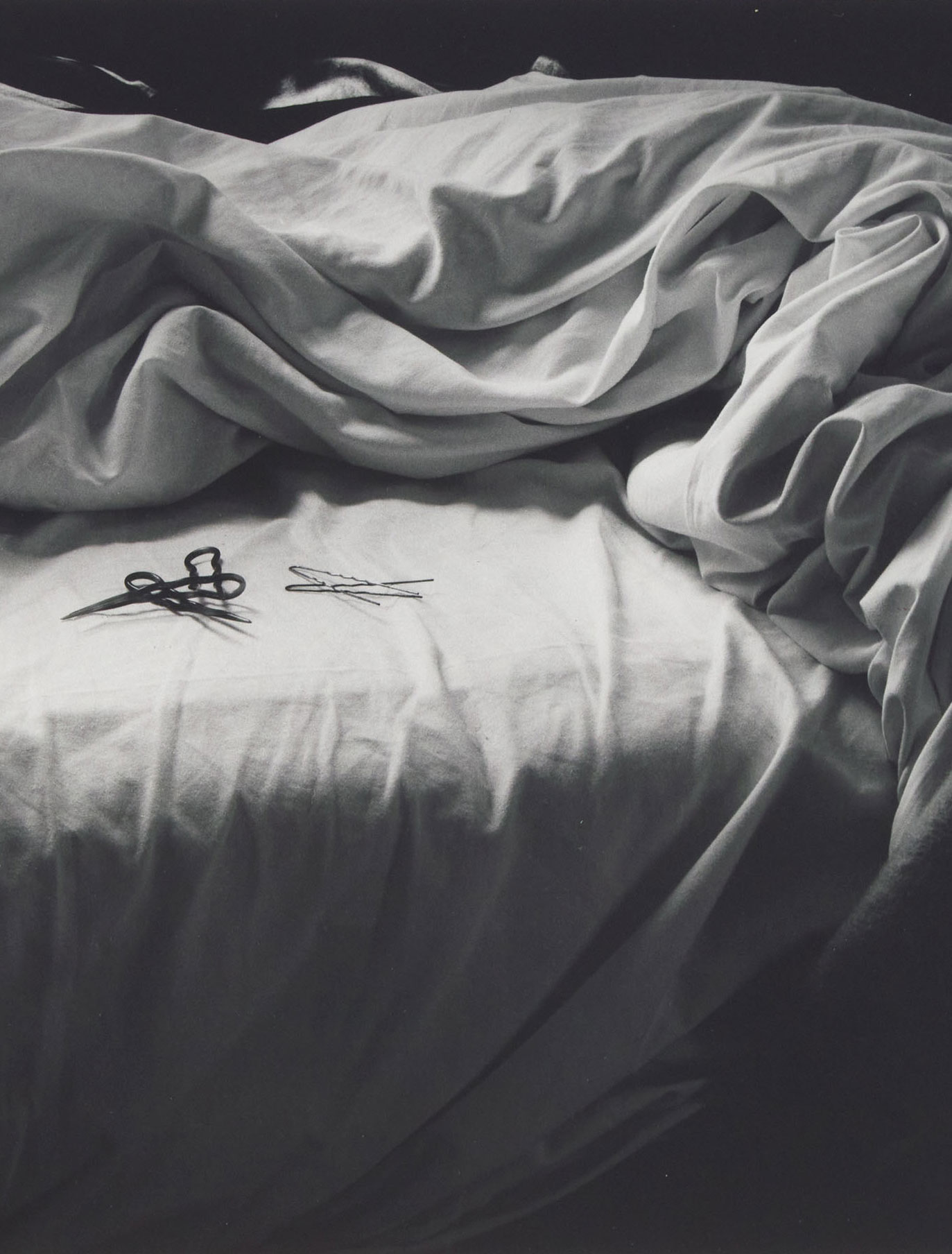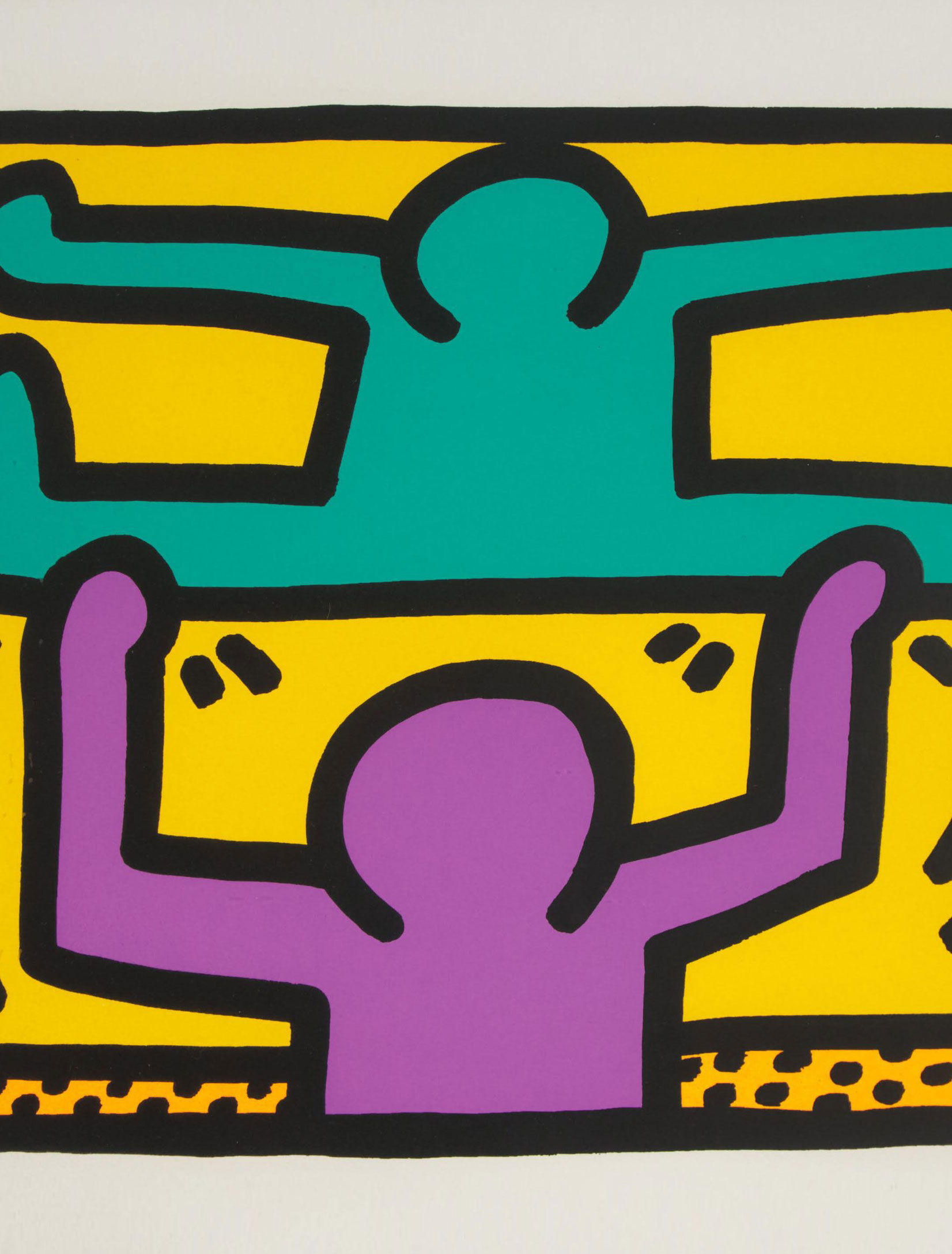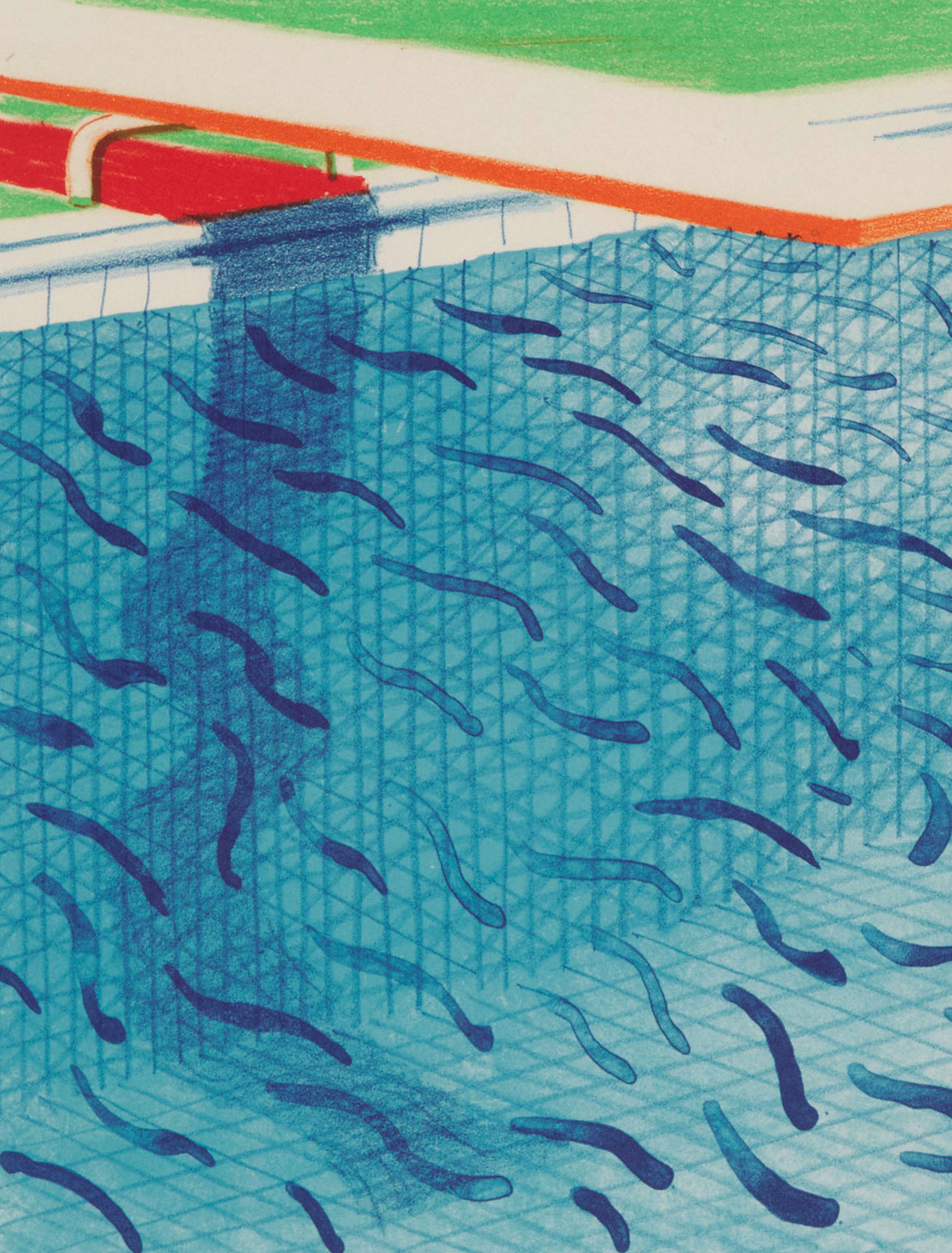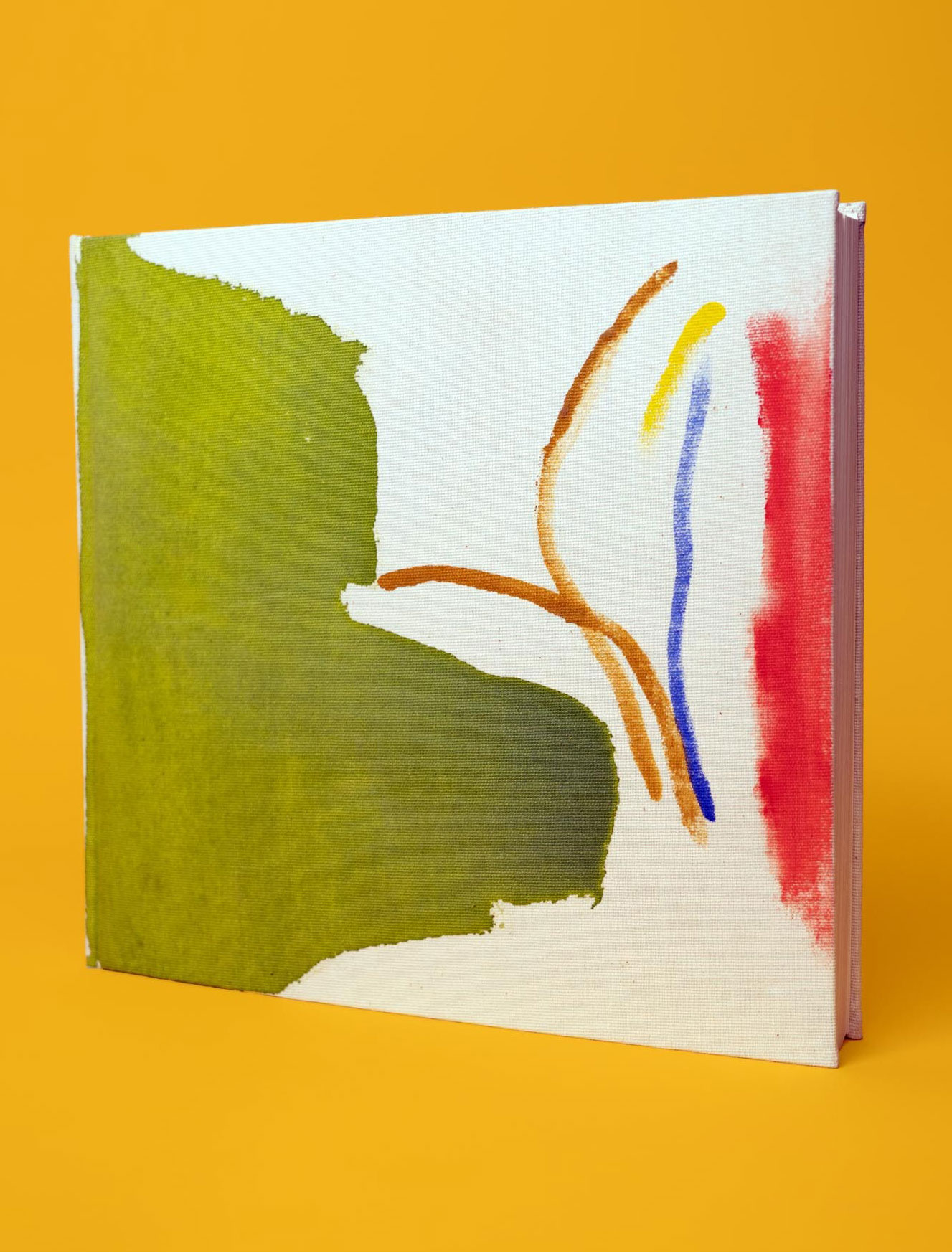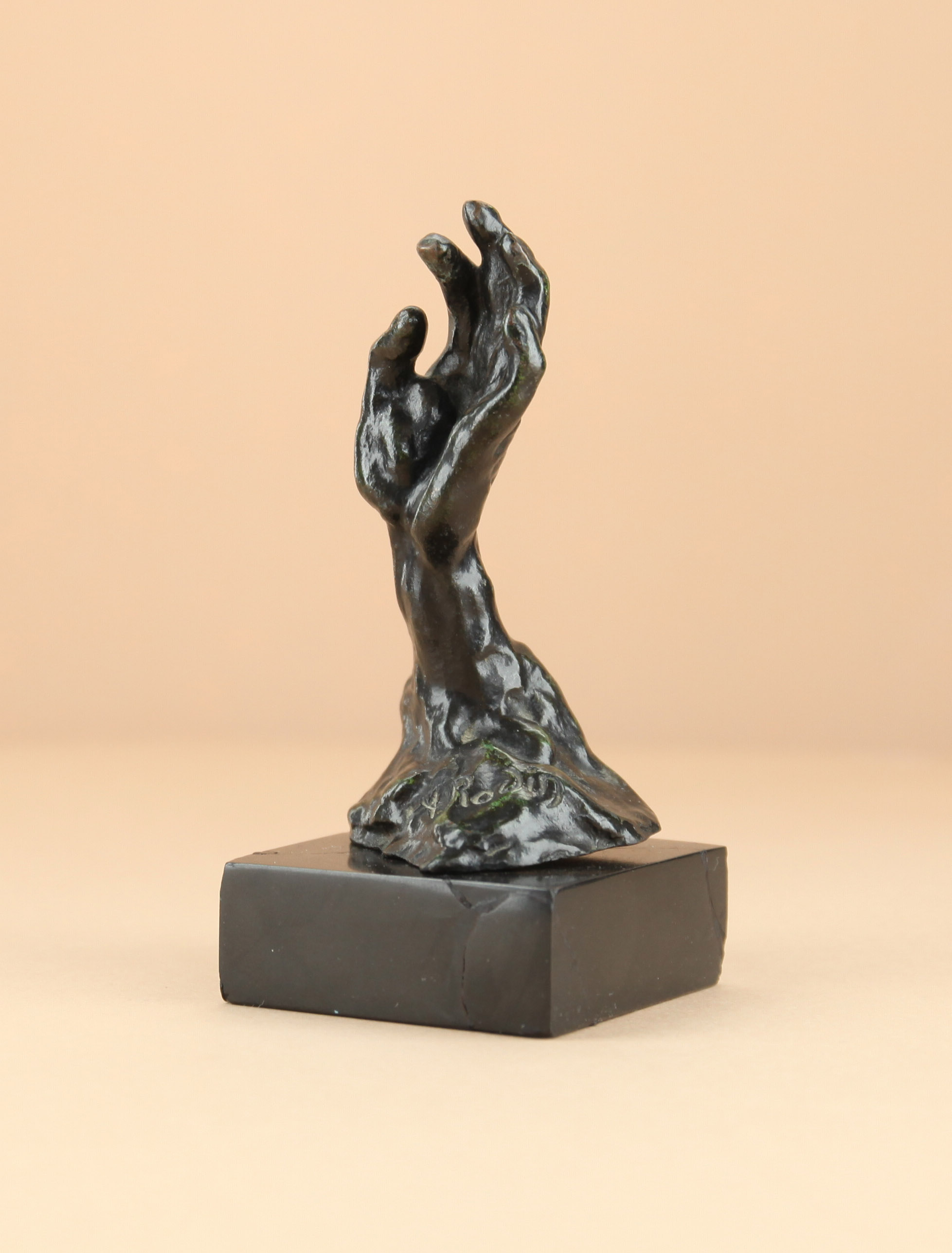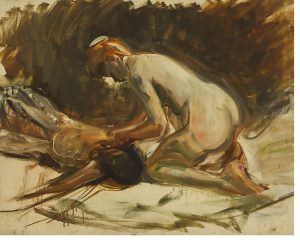
STUDY FOR SAMSON AND DELILAH [E. 1907/26], CIRCA 1901-1902. Oil on canvas laid down on hardboard, signed lower right with the estate stamp. 25.6 x 31.9 in — 65 x 81 cm.
Estimate $15,000-$25,000
Known mostly for his earnest depictions of the working class, Liebermann’s Samson and Delilah represents the artist’s second biblical painting after The Twelve-Year-Old Jesus in the Temple, 1887 – a work which received a barrage of negative reviews and led Liebermann to vow to never paint a biblical theme again. Nonetheless, the Old Testament story of a Philistine woman’s triumph over an Israelite hero captured Liebermann’s attention early on in his career. “As a student at the Weimar Academy, he was already making plans to paint the Old Testament scene of the “triumphant strumpet [Buhlerin],” which he believed showed all the depths of woman’s nature. He once proclaimed in a discussion on ethical matters that Samson and Delilah, along with the good Samaritan, contain everything that needs to be said about humans.” (1)
Although the subject matter had been percolating in the artist’s mind for some decades, Liebermann only began drafting studies around 1901. The seven known oil sketches, (2) abstracted and hurried, veer towards the grotesque – highlighting both the carnal and vindictive tension between the subjects. The large-scale 1902 iteration of the work, now housed in Frankfurt’s Städel Museum, is void of seduction, instead it favours exoneration as Delilah triumphantly displays Samson’s freshly cut hair as a trophy to the shadowy Philistine emerging from the left edge of the painting. In the study on offer at Waddington’s, Samson and Delilah are similarly obscured in the fashion of the mysterious Philistine – presenting an eerily quiet interpretation of what would become a defiant painting.
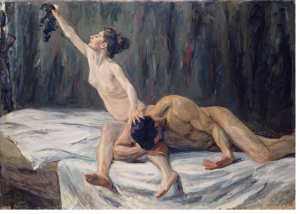
The obscurity of the figures in this particular study aligns more with French Impressionist understandings of modernism – recalling the perspective and veiled identities of Edgar Degas’s bathers. Although the realism of the Samson and Delilah housed at the Städel Museum presents life-sized figures styled in the fashion of the early twentieth century, Liebermann’s revisiting of Samson and Delilah in 1910 (Samson and Delilah – Second Version, 1910, held in the collection of the Gelsenkirchen Städtisches Museum) more closely resembles the study at hand. From tonality to the mirrored positioning of the figures, the Second Version and the 1901-1902 study share Liebermann’s desire to emphasise the grotesque and return to a more impressionistic style. Per Nouwen’s analysis, “In the second version, the sleeping Samson is lying on his back, though his main features remain the same. Delilah, however, has changed a great deal: the skinny, willowy brunette from 1902 has become a very feminine, reddish blonde. Her flesh is already sagging; her breasts are pendulous and her stomach is pinched in little rolls of fat. Her face is contorted into a repulsive, fanatical grimace. Like a beast of prey on the prowl, she bends eagerly over the sleeping Samson, trimming his locks with her own hand.” (3) As the artist’s most studied subject, the oil sketch on offer represents Liebermann’s lifelong determination to capture the essence of humanity – whether that be vindictive or defiant – through the depiction of Samson and Delilah.
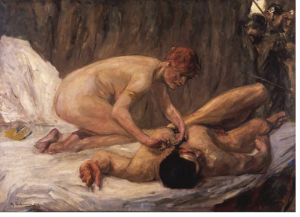
ABOUT THE AUCTION:
Waddington’s is pleased to present our major Canadian and International Fine Art auction, online from November 25-30.
This major auction features the Collection of Sir Christopher and Lady Ondaatje, which includes work by Cornelius Krieghoff, Frederick Verner and Sir William Cornelius Van Horne. Another key collection is that of Murdoch and Joyce Putnam, featuring paintings by A.Y. Jackson, A.J. Casson and Edwin Holgate. Other notable names include Max Liebermann, E.J. Hughes, William Perehudoff, Takao Tanabe, Jean McEwen, Edward Burtynsky and Jean-Michel Basquiat.
Please contact us for more information.
On view at our Toronto galleries, 275 King St. E, Second Floor:
Saturday, November 25 from 12 noon to 4:00 pm
Sunday, November 26 from 12 noon to 4:00 pm
Monday, November 27 from 10 am to 7:00 pm
Tuesday, November 28 from 10 am to 7:00 pm
Or by appointment.
(1) Margreet Nouwen, “Who’s Afraid of Delilah? Liebermann Portraying Women,” essay, in Max Liebermann and International Modernism: An Artist’s Career from Empire to Third Reich (New York, NY: Berghahn, 2011), 158.
(2) ibid, 159.
(3) ibid
Related News
Meet the Specialists

Goulven Le Morvan
Director, International Art, Montreal

Alicia Bojkov
Consignment Specialist, International Art



